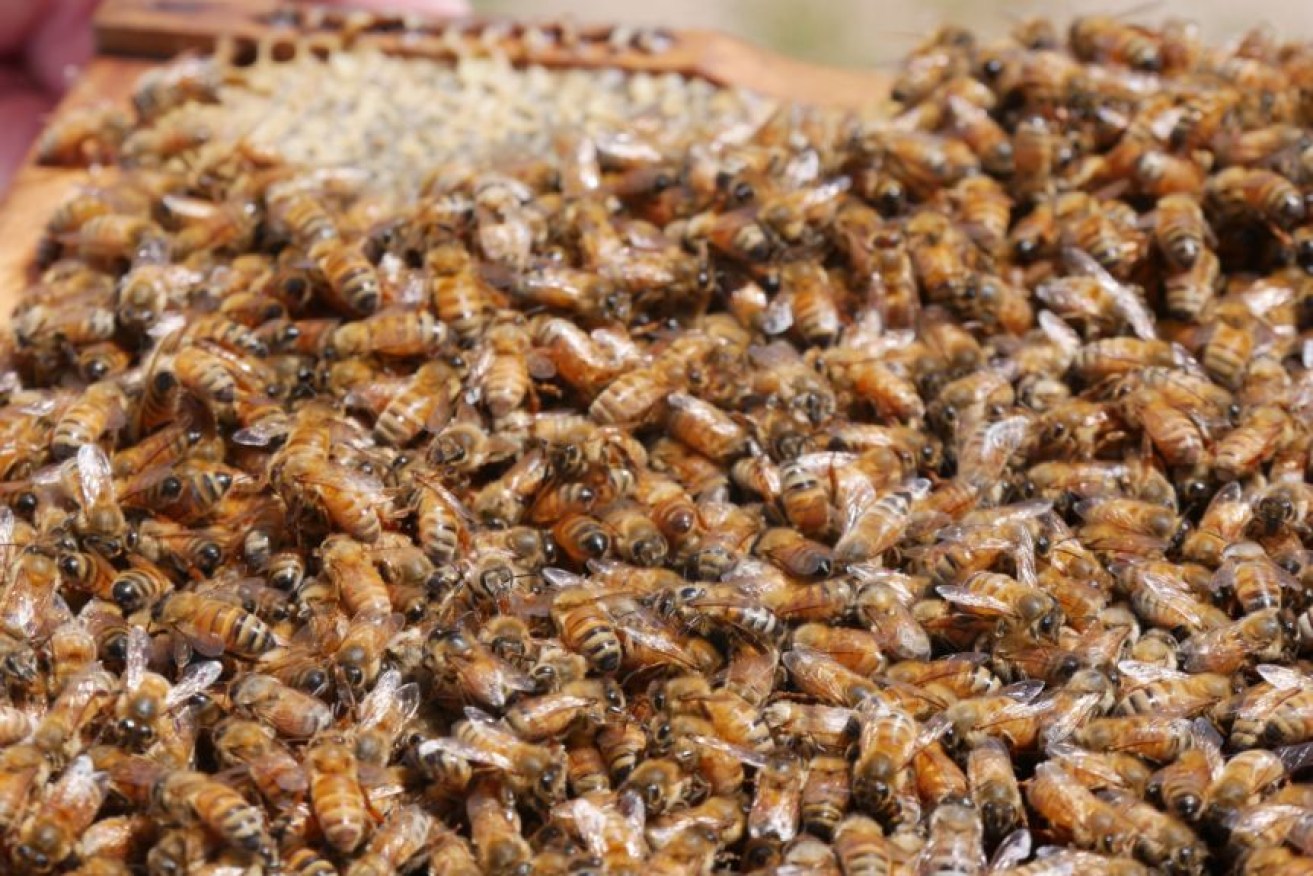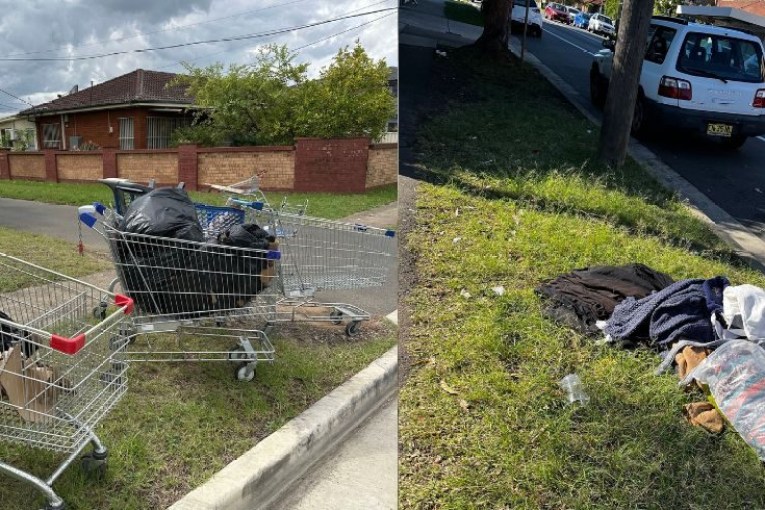Honey yields plummet in disappointing season for beekeepers

Ben Hooper's honey bees have had less nectar and pollen available to them this summer. Photo: ABC
After a promising start, the summer honey season has turned out more bitter than sweet for apiarists across the country.
In South Australia, La Niña’s cool but dry weather conditions provided less pollen and nectar for bees.
Tintinara producer Ben Hooper said his honey yields had dropped 40 per cent below average in what has been a “frustrating” year.
“Typically, when La Niña dials up for us in the apiary industry it produces pretty good results,” he said.
“But it’s been a bitter pill to swallow – it just didn’t quite happen for us this year.
“Just a combination of things and lack of subsoil moisture … while wider agriculture enjoyed good rainfall during the growing season, it tapered off pretty sharply in the late spring and summer.”
With less honey produced, Mr Hooper has turned to supplementary feeding to keep his colony in good condition ahead of pollination and the winter months.
“We would like to just feed the bees, collect pollen from other bees … also, there are other plant-based products that can produce the same amount of protein,” he said.
“It’s not a concern for the consumer at all – it doesn’t affect the honey.”
Mr Hooper said supplementary feeding was becoming more common.
“Once upon a time we would never have done this, but under these compounding dry seasons we’re becoming more inclined to do so,” he said.
“I think it’s essential that we’re prepared to make it a common part of our practice.
“We’re experiencing more frequent and more extreme fluctuations in the temperature and in wider weather and it is having an adverse effect on the way we as beekeepers operate in our craft.”

Ben Hooper with some of the hives he has been supplementary feeding this year. Photo: ABC
‘Learn to live with it’
Many apiarists across Australia are facing similar challenges.
Australian Honey Bee Industry Council chair Trevor Weatherhead AM said the season was “below average” for most states except Tasmania.
“The southern states with their cooler weather … the northern states with their drought conditions didn’t do anything for beekeepers,” he said.
“It was a matter of keeping hives alive.”
Mr Weatherhead said many apiarists had fed their bees extra nutrients in the past few years.
“It’s something that’s sort of coming to the fore,” he said.
“As an industry we certainly don’t want to be supplementary feeding – it’s far better to be able to go out and collect natural pollen.
“With the climate change that’s happening, basically we’ve just got to learn to live with it and go with it.”

Adelaide researcher Dr Katja Hogendoorn says climate change is impacting bees. Photo: ABC
Hotter, drier, longer
University of Adelaide researcher Katja Hogendoorn said the dry periods were having a “major impact” on feed availability for native and honey bees.
“The very hot summers and heatwaves during spring cause the flowers to dissipate very quickly,” she said.
“Eucalypts appear to flower without producing much nectar at all.
“Nectar is produced by glands in flowers – it requires an uptake of water, and if the water cannot be taken up then nectar cannot be produced in copious amounts.
“Not every summer is extremely hot … but the average temperature has gone up and the heatwaves have become longer and more intense.
“Climate change is happening and that has been predicted by scientists for a very long time.”
Dr Hogendoorn has been researching ways farmers can revegetate their land to attract native and farmed bees while improving their pollination outcomes.
“I was trying to find out what the farmer can plant and how much that benefits them,” she said.
“Generally, native vegetation in a proximity of 200 metres from the crop can benefit crop pollination.”
‘A long way behind’
The South Australian Apiarists’ Association has also been working with the Department for Environment and Water to increase beekeepers’ access to public land.
Apiarists need the space to keep their hives on during the off-season when the bees are not pollinating crops on farms.
SAAA executive member Danny Le Feuvre said the association was “pretty excited” to reach the draft consultation stage.
“Before we started this process, the DEW policy for honey bees was non-existent,” he said.
“The draft policy that came out [in December] was never perfect for us … particularly when we’re talking something like access to public lands, there’s a lot of interested parties and a lot of emotions involved.”
He said SA apiarists had access to only about 200 public sites, but in other states they had thousands.
“We’re a long way behind and, as an industry, we’re really struggling to keep up with the pollination demand,” Mr Le Feuvre said.
“Access to public land is the missing link for us.
“It’s not about getting into every inch of public land in the state, it’s about trying to look at what policies were in place and if they could be reviewed and looking at where bees might be able to coexist with the current use of particular public lands.”








